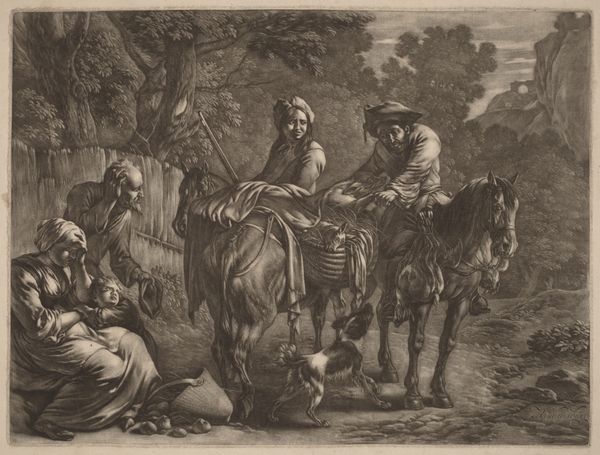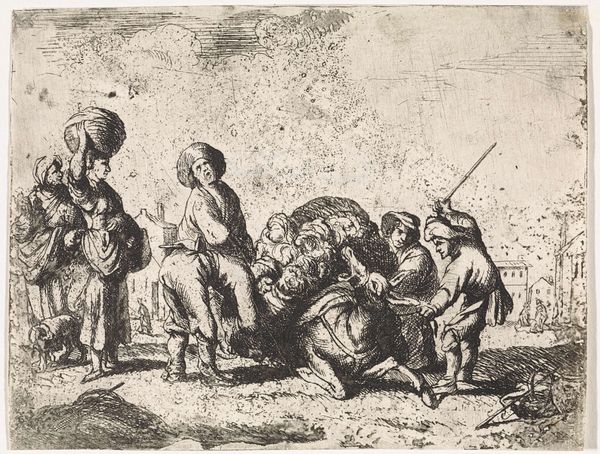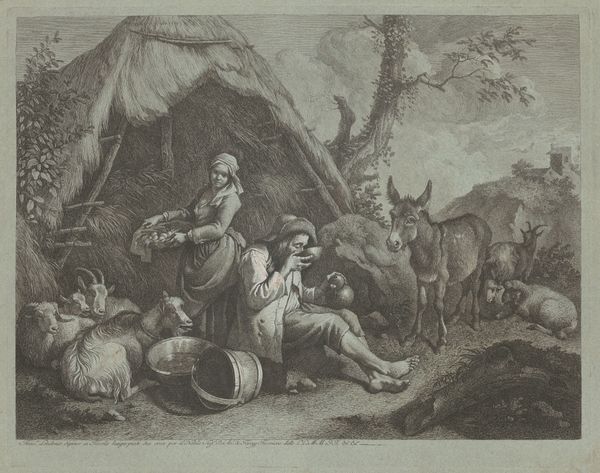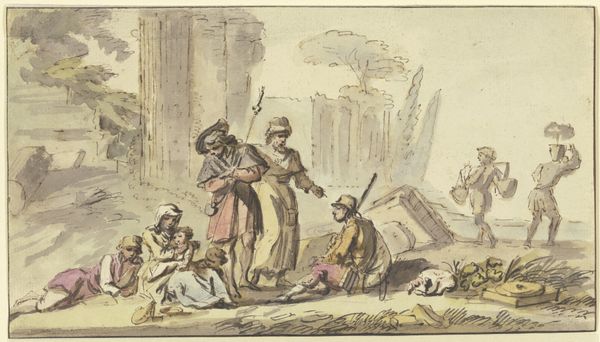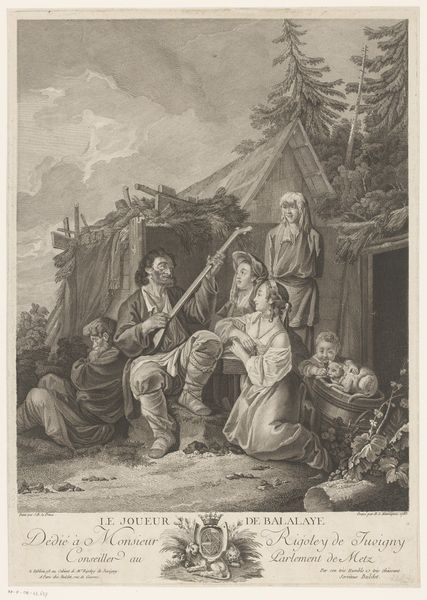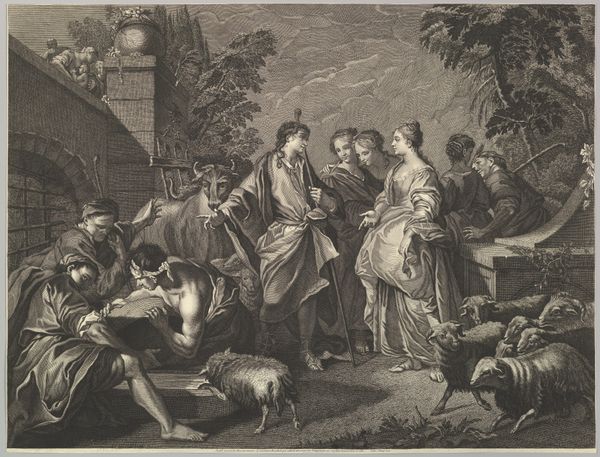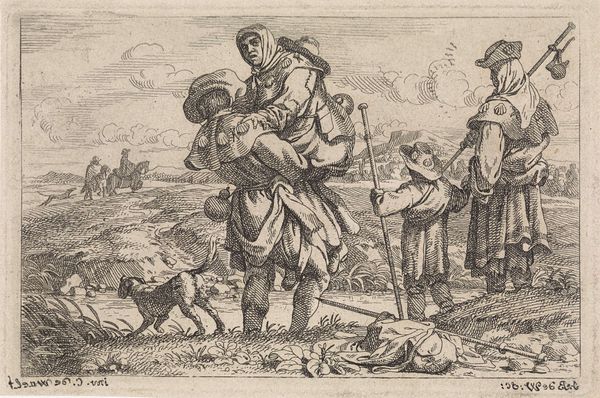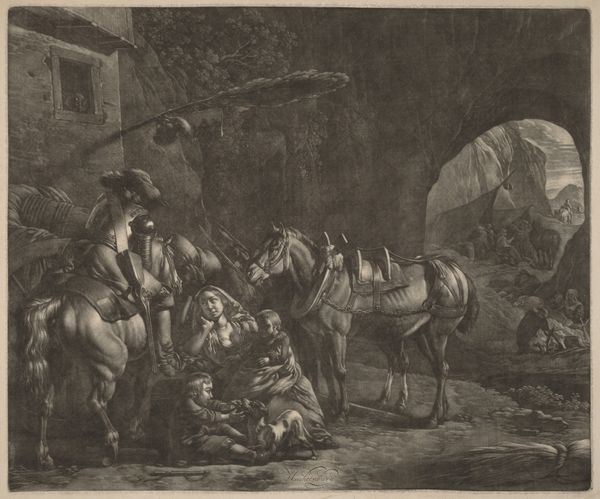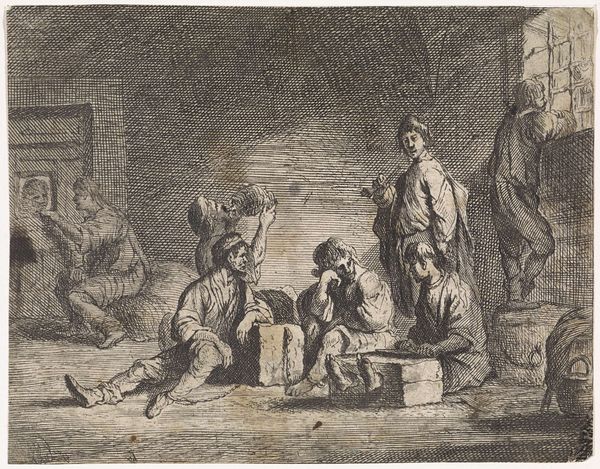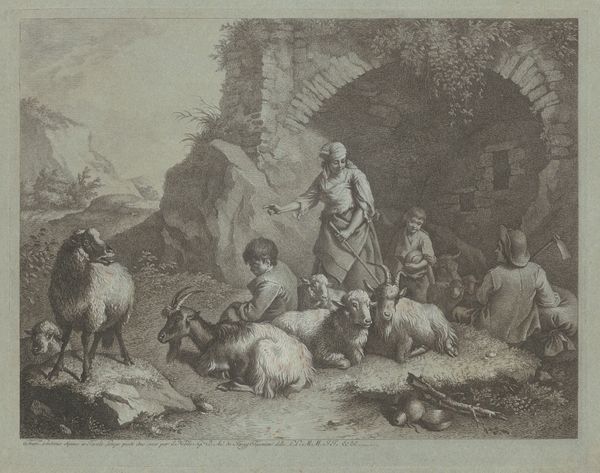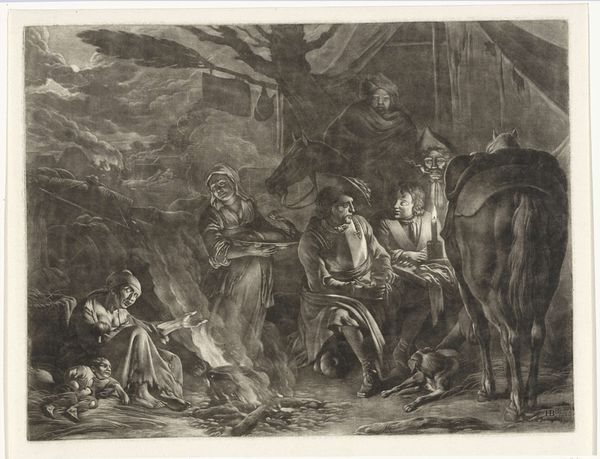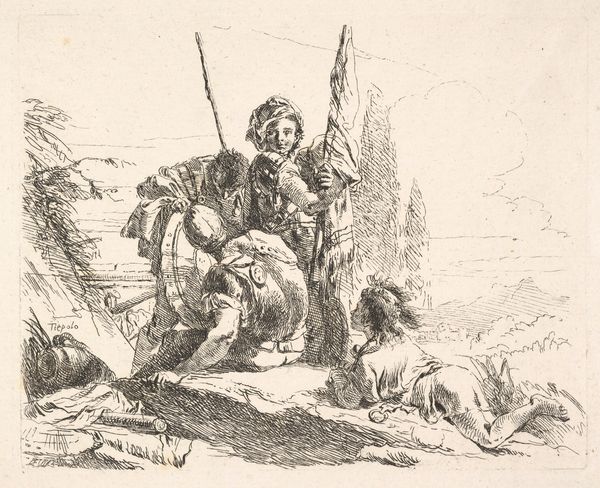
painting, oil-paint
#
narrative-art
#
baroque
#
dutch-golden-age
#
painting
#
oil-paint
#
figuration
#
oil painting
#
genre-painting
#
history-painting
#
realism
Dimensions: overall: 96.5 x 121.9 cm (38 x 48 in.) framed: 119.4 x 144.1 x 5.7 cm (47 x 56 3/4 x 2 1/4 in.)
Copyright: National Gallery of Art: CC0 1.0
Curator: What strikes you most upon encountering Gerbrand van den Eeckhout's "The Levite at Gibeah," dating from the early 1640s? Editor: Immediately, it's the light, isn’t it? That stark contrast between the shadows enveloping the seated figures and the brightly lit man in the foreground creates a deep sense of unease, a visual representation of conflict. Curator: Indeed. The artwork, executed in oil paint, captures a disturbing narrative rooted in the Book of Judges. It depicts the Levite's desperate appeal to the elders of Gibeah after his concubine suffers a horrific fate at the hands of the townspeople, thus underlining themes of gender, violence, and accountability. Eeckhout doesn't just illustrate; he offers a scathing commentary. Editor: Agreed, the interplay of light and dark does create the symbolic conflict between good and evil, while the composition draws your eye. The perspective lines, the placement of the figures all force us to witness the appeal. There’s a Baroque theatricality at play here. Curator: Absolutely, the dramatic gestures and emotionally charged expressions are quintessential Baroque, heightened by the realism that characterized the Dutch Golden Age. This painting speaks to issues that reverberate across centuries – themes of violence against women, justice denied, and communal responsibility shirked. Editor: I’m seeing it differently now. It’s like Eeckhout deliberately fragments our gaze. That lone figure is so sharply defined while the woman is draped in this theatricality of heavy color which somehow diminishes her importance. The formal choices really underline the passivity of the subjects versus the active subject. Curator: Exactly, those color and light choices directly involve the themes and historical context that underline gender imbalance and who is granted power. We're forced to confront uncomfortable truths about power structures and collective morality. Editor: So, it’s a technical marvel but, much more importantly, prompts vital discourse concerning the legacy of violence and systemic injustice, demanding sustained, unflinching examination. Curator: Precisely. Its visual artistry serves a greater purpose.
Comments
No comments
Be the first to comment and join the conversation on the ultimate creative platform.
